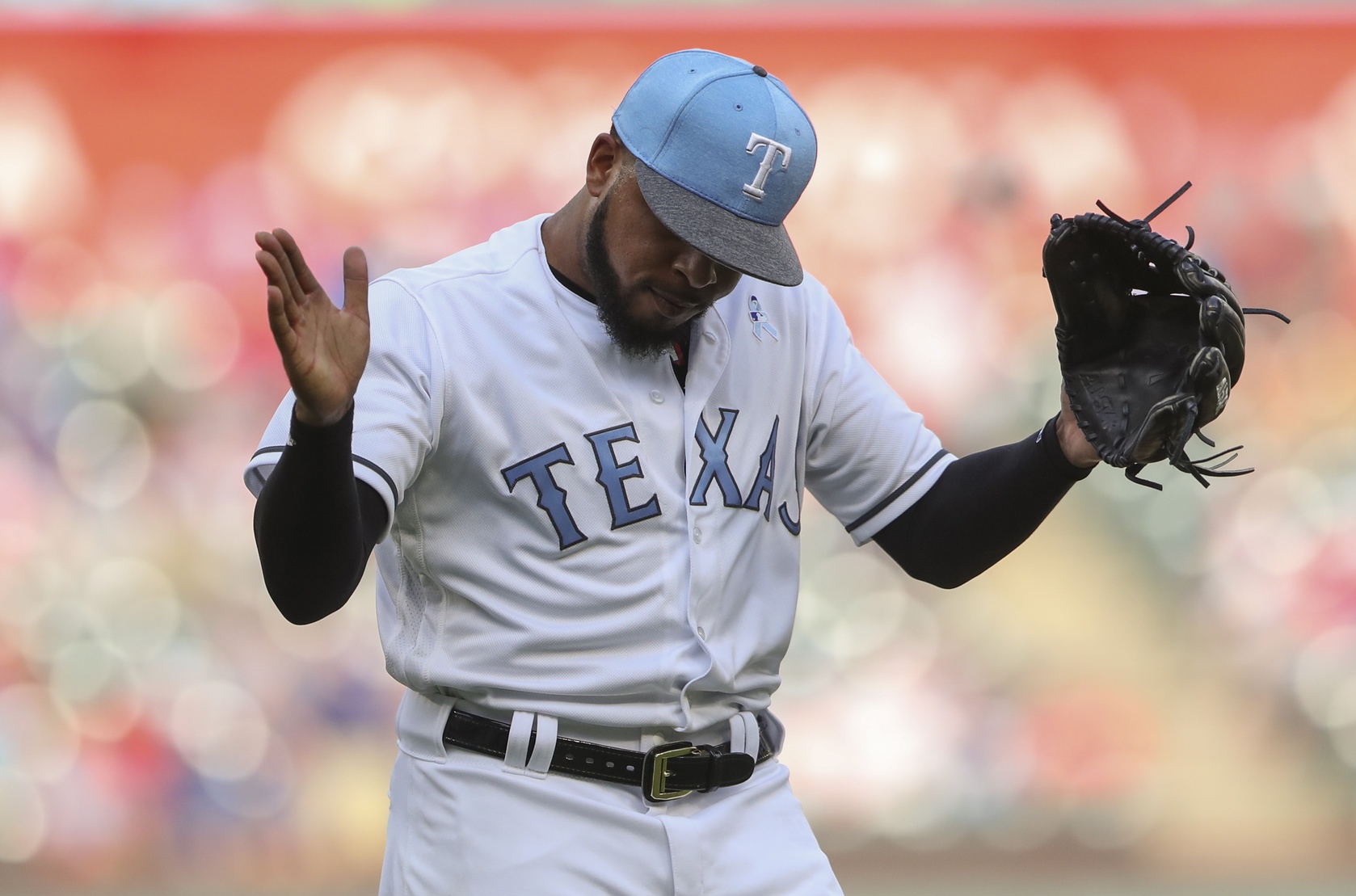On July 31st, the Brewers traded right-handed pitching prospect Taylor Scott to the Texas Rangers for Jeremy Jeffress. Jeffress, a right-handed relief pitcher, is now on his third stint with the Brewers organization, spending time with the Royals, Blue Jays, and Rangers in between.
Jeffress was a secondary, but still important, piece in the Jonathan Lucroy trade last year, which now looks like an absolute fleece by the Brewers front office.
Jeffress was limited to just 13.3 innings pitched in two months with the Rangers last season due to a DWI arrest in late August. He was supposed to solidify a shaky Rangers bullpen but he barely saw the field.
Jeffress hasn’t missed any time this year, but his performance has dropped off considerably. He had a 5.31 earned run average and a 5.87 deserved run average with the Rangers prior to the trade. His -0.3 WARP. 2017 has been the worst full season of his career thus far by a landslide, he has never before posted a DRA above 4.00 in season where he threw more than 20 innings pitched. Overall, Jeffress has seen his walk rate, home run rate, and strikeout rate all go in the wrong directions. His walks per nine are up over 4.0; the righty is approaching two home runs per nine innings, and his strikeout rate has fallen from 23.5 percent in 2015 to 16 percent this year.
What jumps off the page is Jeffress’s dip in velocity. His sinker velocity has gone from 96.3 MPH in 2016 to 94.5 MPH this year. Batters had never slugged above .400 over a full season against the pitch, but this year batters are slugging .557 against his sinker. He is getting whiffs on just 5.44 percent of his sinkers, after having a whiff percentage over 9 percent in each of the past two seasons. He uses his sinker much more than any other pitch in his repertoire, throwing it over 50 percent of the time in every season since 2013.
Jeffress is also working outside of the zone more often and batters simply aren’t biting. His zone rate is down almost four percentage points. Batters are swinging at just 29.6 percent of his pitches outside of the zone, after swinging at 35.7 percent last year. This has culminated in his bloated walk rate. He has lost his ability to get hitters to chase outside the zone and it has turned into a free pass problem.
Not only has Jeffress lost velocity and developed a walk problem, he has become one of the most homer-prone relievers in the league. He has allowed eight home runs already this year after allowing just ten in his entire major league career prior to this year. From 2014-2016, he allowed the tenth-least home runs per nine among relievers with over 140 innings pitched. His home run per fly ball rate is 24.2 percent, fifth-highest among those with over 40 innings pitched, which suggests that he has been extremely unlucky despite concerning home run numbers.
It must be noted that Jeffress has pitched in one of the toughest environments so far this year. Not only has he had to call Globe Life Park home, but the numbers support the fact that Jeffress has been unlucky as far as where he has had to pitch. His pitcher park factor (PPF) is tied for second-highest in the league at 111, or 11 percent above average.
Jeffress is still relatively young, as he has yet to turn thirty, so it’s hard to believe he is facing a decline due to age. Whether he is hiding an injury, fighting a personal problem, was in need of a change of scenery, or something else is anyone’s guess. What we do know is that the Brewers have rolled the dice on Jeffress again. He is under team control until after the 2019 season, let’s hope the second reunion between the Brewers and Jeffress sees a playoff appearance.
Photo Credit: Kevin Jairaj, USAToday Sports Images
